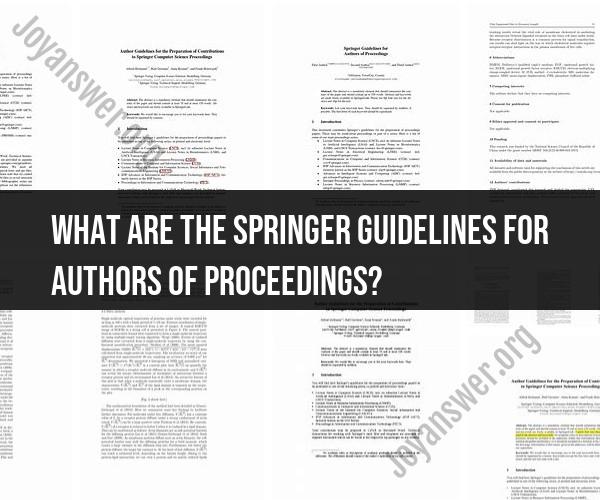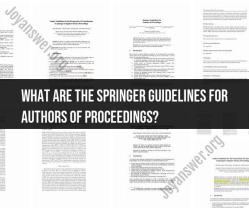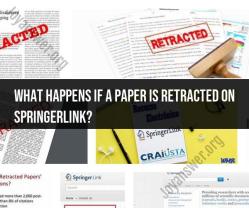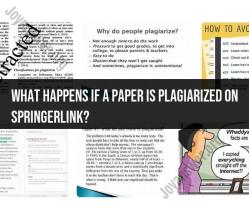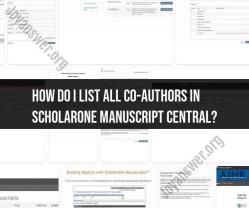What are the Springer guidelines for authors of proceedings?
Springer is a well-known publisher of academic journals, books, and conference proceedings in various fields of science, technology, medicine, and more. If you are an author planning to submit a paper for inclusion in Springer proceedings, it's essential to adhere to their specific author guidelines. While guidelines may vary depending on the conference or series, here are some common elements often found in Springer's author guidelines for proceedings:
General Formatting:
- Manuscripts should be prepared in LaTeX or Microsoft Word.
- Follow a specific template provided by Springer for the conference or proceedings series.
Title and Author Information:
- Include a clear and informative title.
- Provide the names and affiliations of all authors.
- Indicate the corresponding author and their contact information.
Abstract:
- Include an abstract that summarizes the key contributions and findings of the paper.
Keywords:
- Provide a list of keywords that describe the subject matter of the paper.
Sections and Headings:
- Organize the paper into clear sections with appropriate headings (e.g., Introduction, Methodology, Results, Conclusion, References).
Citations and References:
- Follow a specific citation style (e.g., APA, IEEE) as specified in the guidelines.
- Ensure that all references cited in the paper are included in the reference list, and vice versa.
Figures and Tables:
- Insert figures and tables as necessary, and ensure they are of high quality and appropriately captioned.
- Refer to figures and tables within the text.
Equations:
- Format mathematical equations using the appropriate notation and formatting.
Language and Style:
- Write the paper in clear and concise English.
- Use correct grammar and spelling.
- Maintain a consistent style throughout the paper.
Length and Page Limit:
- Adhere to the specified page limit, which may vary depending on the conference or proceedings series.
Submission Process:
- Follow the submission instructions provided by the conference or proceedings organizers.
- Ensure that your manuscript is prepared in the required file format (e.g., PDF, Word, LaTeX).
Ethical Considerations:
- Adhere to ethical guidelines, including proper citation of sources and avoidance of plagiarism.
- Disclose any potential conflicts of interest or funding sources.
Review and Revision:
- Be prepared for the peer review process, which is common for conference proceedings. Address reviewer comments and revise your paper accordingly.
Copyright and Licensing:
- Understand the copyright and licensing terms associated with your submission. Springer often requires authors to transfer copyright or grant certain usage rights.
Templates and Sample Files:
- Many conferences provide templates and sample files to help authors format their papers correctly.
It's crucial to carefully read and follow the specific author guidelines provided by the conference or proceedings series to which you are submitting your paper. These guidelines may include conference-specific requirements and formatting instructions. Additionally, you may find detailed information on the conference or proceedings series website or in the Call for Papers (CFP) document for the event.
